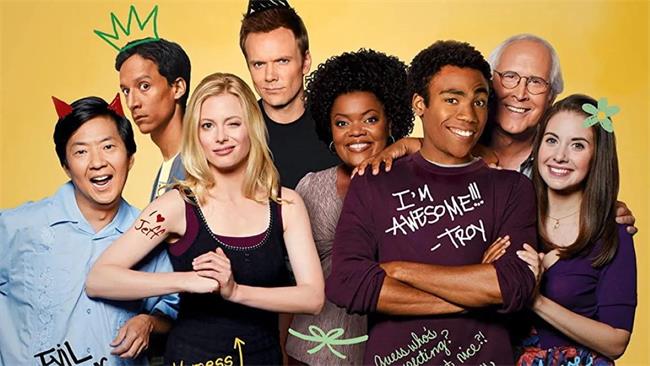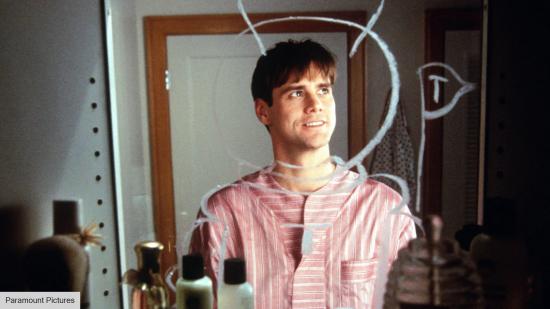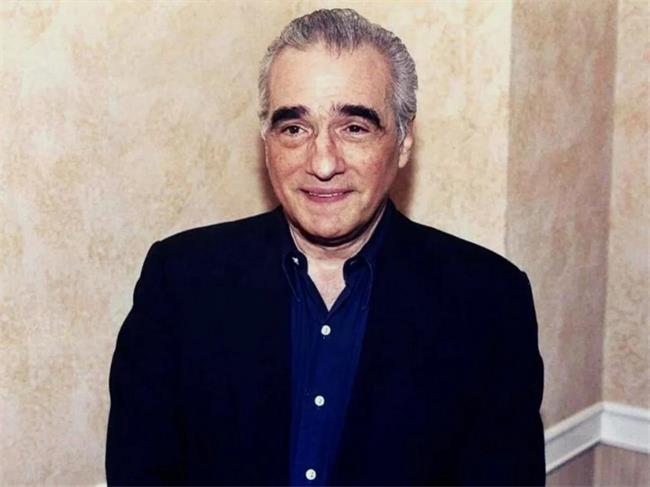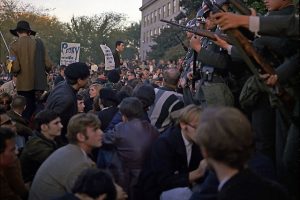10 Visionary Filmmakers Nearly Broken by Hollywood
Making movies might look like a glamorous, adrenaline-filled adventure — but sometimes, what happens behind the camera is more intense than what ends up on screen. For many actors, stepping onto a film set can mean stepping into a world of emotional extremes, physical exhaustion, and sometimes, genuine danger.
Take James Cameron, for example. While he’s now known for cinematic blockbusters like Titanic and Avatar, his earlier work on The Abyss nearly broke his cast. The production was so physically and mentally demanding that it led to full-on breakdowns — with Ed Harris allegedly punching Cameron after a scene where Harris was almost left gasping for air underwater. It wasn’t just acting; it was survival.
And then there’s Stanley Kubrick, a name synonymous with cinematic genius and meticulous detail. On the set of The Shining, his obsession with perfection spiraled into what many now describe as psychological torment. Actress Shelley Duvall was reportedly pushed so hard — with over a hundred takes for a single scene — that her health visibly deteriorated during filming. The eerie madness you see on screen? It wasn’t entirely acting.
But the stress isn’t always one-way. The strain of filmmaking doesn’t just fall on actors. Sometimes, the directors themselves are the ones who crack. There have been cases where directors, overwhelmed by chaotic shoots, tight deadlines, or hostile work environments, were pushed so far that they considered quitting entirely. The pressure to deliver a masterpiece — while juggling egos, budgets, and unpredictable circumstances — can be immense.
10. Mike Judge’s Fake Movie Almost Broke His Filmmaking Spirit

Hey movie buffs and those who love quirky cinematic tales! Today, I’m going to share with you a fascinating story about Mike Judge, the creative genius behind the iconic Beavis and Butthead. You might know him for his hit films Office Space and Idiocracy. But did you know that one of his movies almost made him lose faith in the whole filmmaking process? Yep, it’s a wild ride, so let’s dive right in.
Mike Judge, the mastermind who brought us the lovable yet dim – witted Beavis and Butthead, has only a handful of feature films under his belt. However, the ones he has made have become cult classics. Among them, Idiocracy stands out as a particularly memorable piece. This movie imagines a dystopian future where humanity has taken a nosedive in terms of intelligence.
Now, let me paint you a picture of one of the most bizarre scenes in Idiocracy. In this scene, a group of people from the future gathers at a movie theater to catch a showing of a movie titled Ass, the Movie. Sounds ridiculous, right? Well, the premise is even more outlandish. The joke is that in this future society, where intelligence has plummeted, the audience is eagerly watching a movie that is literally just a close – up of a bare backside. And, as per the script, they’re laughing their heads off throughout the screening.
To bring this wild scene to life, Mike Judge had to create the fake movie, which, let’s face it, was just a continuous shot of bare butts. He also assembled a cast of 200 extras to act as the movie theater audience. You’d think that since they were in on the joke, they’d just go through the motions. But here’s where things took an unexpected turn.
As soon as the extras took their seats and the “butt movie” started playing, something amazing (and a bit baffling) happened. The audience genuinely started laughing, just as the script had intended. But here’s the kicker: it wasn’t scripted laughter. They were actually finding it funny! Imagine Judge’s reaction. He must have been completely stunned.
This unexpected turn of events made Judge start questioning the very purpose of making his movie. After all, if a simple fake movie with such a ridiculous premise could get the same reaction as his carefully crafted work, what was the point? It was a moment of self – doubt that could have potentially derailed his entire filmmaking journey.
9. When Chevy Chase Nearly Drove a Horror Legend Out of Hollywood

It’s no secret in the film industry that working with Chevy Chase can be… challenging, to put it mildly. Over the years, his name has been linked to a long list of on-set feuds, ego clashes, and behavior that’s left even seasoned professionals gritting their teeth. But perhaps the most astonishing example of his off-screen drama comes from his short-lived collaboration with horror master John Carpenter — a project so toxic, it nearly ended the director’s career.
The year was 1992, and the film was Memoirs of an Invisible Man — a sci-fi thriller that most movie fans barely remember today. It wasn’t supposed to be a disaster. In fact, it began with promise, with Ghostbusters director Ivan Reitman originally at the helm. But after just a taste of working with Chase, Reitman bowed out. Enter John Carpenter, hoping to revive the troubled project.
What followed was, according to Carpenter himself, a complete nightmare.
Chase, who played the lead, reportedly loathed the intricate makeup process that was essential for portraying an “invisible” character. Instead of committing to the role, he frequently yanked off his makeup mid-shoot — derailing entire days of production. This wasn’t just an inconvenience; it was sabotage on a cinematic level. And it didn’t stop there.
Chase’s typical abrasive behavior — constant insults, undermining crew members, and asserting control over the set — turned the film into an endurance test. Carpenter, known for creating horror masterpieces like The Thing and Halloween, later confessed that the experience left him questioning whether he even wanted to continue directing at all. In a rare, fiery comment, he referred to Chase as someone “who should not be named, who needs to be killed” — followed by a suggestion that he be set on fire. That’s not just director frustration; that’s full-blown creative trauma.
Although Memoirs of an Invisible Man did make it to theaters, it vanished quickly — both from box offices and public memory. But behind its forgettable reception lies a production tale that’s hard to forget: one where ego, tension, and artistic burnout collided in spectacular fashion.
8. David Ayer’s Suicide Squad: The Film That Nearly Broke Its Own Director

For fans of comic book cinema, the 2010s were a golden age. With the MCU (Marvel Cinematic Universe) rewriting the rules of blockbuster success, it seemed inevitable that DC Comics would try to match the magic. But while the DCEU (DC Extended Universe) had its moments, it often felt like a cinematic identity crisis. And no film symbolizes that struggle more than 2016’s Suicide Squad — a movie that, behind the scenes, left a director devastated.
David Ayer, the filmmaker behind gritty projects like End of Watch and Fury, didn’t just make Suicide Squad — he lived it. And according to Ayer himself, what the world saw in theaters was a far cry from the film he originally envisioned. In fact, he’s said more than once that the experience of making the film — or more precisely, watching his film be reshaped by a studio in crisis — left him emotionally broken.
Originally, Ayer crafted Suicide Squad as a dark, character-driven exploration of damaged antiheroes — a kind of soulful descent into chaos. But things took a sharp turn when Batman v Superman flopped with critics, and Deadpool — an irreverent, R-rated comic flick from Fox — blew up the box office with its humor and attitude. In a snap decision, Warner Bros. pivoted, demanding rewrites and reshoots to inject comedy and levity into Ayer’s serious, moody narrative.
The result? A film tonally torn in half — and a director left in its wake. Ayer has since described it as his “biggest Hollywood heartbreak,” hinting more than once that a darker, more complete Ayer Cut exists — one that could redeem the original vision if it’s ever allowed to surface.
Despite the critical backlash, the film did introduce the world to Margot Robbie’s Harley Quinn, a breakout performance that has since become one of DC’s most iconic modern roles. But for Ayer, the legacy of Suicide Squad remains a painful what-if — a reminder that even in the world of superheroes, real-life studio politics can be the ultimate villain.
7. Russell Crowe and Johnny Depp: The Duo That May Have Broken Peter Weir

In the glamorous yet unpredictable world of Hollywood, it’s no secret that some actors can be more challenging to work with than others. We’ve all heard tales of diva – like behavior and on – set clashes. Chevy Chase is often cited as an example of a difficult actor, but he’s far from being the only one. And interestingly, not every actor makes things tough in the same way.
Ethan Hawke, the talented actor who starred in Peter Weir’s Dead Poets Society, has shared some rather eye – opening insights about the legendary director. According to Hawke, Peter Weir, who gave us such cinematic masterpieces as The Truman Show and Dead Poets Society, effectively walked away from Hollywood after the 2010 release of The Way Back.
But what could have driven a director of Weir’s caliber to take such a drastic step? Well, Hawke claims that it was the antics of two particular actors: Johnny Depp and Russell Crowe. Weir used to have a real passion for filmmaking, but Hawke says that actors started getting in the way of that passion.
Let’s start with Russell Crowe. Weir directed Crowe in the epic Master and Commander. While the movie was a critical and commercial success, it seems that the behind – the – scenes experience might not have been all smooth sailing. Although there aren’t many details available about their specific on – set issues, it’s clear that there were some underlying tensions.
Now, what about Johnny Depp? Here’s where things get really interesting. Weir was actually set to direct Depp in a movie called Shantaram. This project had a lot of potential, with Depp’s star power and Weir’s directing expertise. However, things took a turn for the worse when the director and the actor clashed over the creative direction of the film.
The two couldn’t see eye – to – eye on how the movie should play out. This creative disagreement was so intense that it led Weir to throw in the towel and quit the project. It’s quite possible that this high – profile falling – out, along with any previous issues he may have had with Crowe, contributed to his decision to step away from Hollywood.
6. The Man Behind Risky Business Who Vanished from Hollywood by Choice

Mention Risky Business and most people instantly picture a young Tom Cruise, sliding across the floor in socks and shades, launching his career with one unforgettable scene. But behind that iconic image was Paul Brickman, the writer-director who brought the story to life. While Cruise soared into superstardom, Brickman did something few in Hollywood ever dare to do — he quietly walked away.
Brickman’s breakout success should’ve been the beginning of a long, decorated career. Risky Business wasn’t just a commercial hit — it was praised by critics and became a cultural touchstone of the 1980s. Yet instead of riding that momentum into bigger studio deals or a slate of high-profile films, Brickman vanished from the director’s chair.
In the seven years following his smash debut, Brickman directed only one more feature: Men Don’t Leave, a 1990 dramedy starring Jessica Lange and Kathy Bates. The film was well received, but again, he retreated. It would be more than two decades before he returned — and only for a short film.
What happened? The spotlight simply didn’t suit him.
Brickman later admitted that the glare of Hollywood success was overwhelming. The idea of becoming the next big thing in the film world didn’t excite him — it exhausted him. In an interview with Salon, he summed it up plainly: “Some people like the visibility. I don’t.” Instead of chasing fame, he chose a quieter life outside Los Angeles, away from the high-pressure studios and red carpets.
In a town that celebrates hustle and ambition, Brickman’s story is both rare and strangely admirable — a reminder that not every creator wants the world to watch. Sometimes, making something brilliant is enough… even if it means fading into the background afterward.
5. Ryan Coogler Almost Walked Away from Film After Chadwick Boseman’s Death

The Marvel Cinematic Universe has had its fair share of box office hits, but few films have resonated on such a deep cultural level as Black Panther. Released in 2018, the movie was more than just another superhero spectacle — it was a global phenomenon. Directed by Ryan Coogler and led by the incomparable Chadwick Boseman, it soared to a 96% rating on Rotten Tomatoes, raked in over $1.3 billion, and made history by earning three Academy Awards — more than any comic book movie before it.
But behind the triumphant headlines was a personal story of loss that nearly derailed one of Hollywood’s most promising directors.
Chadwick Boseman’s untimely passing in 2020 sent shockwaves not only through the entertainment industry but into the heart of Coogler himself. Unbeknownst to nearly everyone, Boseman had been silently battling colon cancer, continuing to act — and inspire — even as the disease advanced. His sudden death at just 43 years old was more than a tragic loss; it was a deeply personal one for Coogler, who had formed a strong bond with the actor during the making of Black Panther.
Struggling to process the grief, Coogler seriously considered leaving filmmaking altogether. The thought of making a sequel without his friend felt impossible, even disrespectful. As he later shared in interviews, he found himself questioning not just the story, but his own place in the industry.
What pulled him back from the edge was a memory — a conversation he once had with Boseman, discussing the power of representation and the responsibility that came with portraying T’Challa, a king and a symbol of strength for millions. That memory gave Coogler the clarity he needed. The sequel, Black Panther: Wakanda Forever, became not just a continuation of a franchise, but a tribute — both personal and profound.
In an industry where success often overshadows vulnerability, Coogler’s emotional journey is a reminder of the deeply human stories that exist behind even the biggest blockbusters.
4. Stephen King’s Regretful Directorial Debut: Maximum Overdrive
Stephen King, the undisputed Master of Horror, has an impressive literary resume. With nearly 100 novels and novellas to his name and over 350 million books sold worldwide, his influence on the horror genre is immeasurable. However, when it comes to directing, his track record tells a different story.
King has always had a complicated relationship with the film adaptations of his works. Many fans and critics praise Stanley Kubrick’s The Shining as a cinematic classic. But King himself was far from impressed. One of his biggest gripes was how Kubrick altered key elements of the novel, especially the way the hotel influenced the main character, Jack Torrance. This creative divergence clearly left a sour taste in King’s mouth.
Frustrated with Hollywood’s handling of his stories, King decided to take matters into his own hands. He chose to adapt his short story Trucks into a film, rebranding it as Maximum Overdrive. Little did he know that this decision would lead to one of the most ridiculed movies in cinematic history.
The production of Maximum Overdrive turned out to be a disaster. King has been candid about his lack of directorial skills, admitting that he had no idea what he was doing behind the camera. To make matters worse, he was heavily under the influence for most of the shoot. Not only was he incredibly high, but he was also drunk.
The result was a movie that was panned by critics and audiences alike. The poor storytelling, lackluster direction, and overall chaotic production values made it a laughingstock. This experience was so unpleasant for King that he decided to hang up his director’s hat for good, vowing never to direct again.
3. Steven Spielberg Nearly Quit After Making Schindler’s List

We often think of Steven Spielberg as a larger-than-life figure — the mind behind Jaws, E.T., Indiana Jones, and other cultural landmarks. But even for a director of his caliber, there was one film so emotionally overwhelming that it nearly ended his career: the haunting and unforgettable Schindler’s List.
Released in 1993, the film is widely considered one of the most powerful cinematic portrayals of the Holocaust. It won seven Academy Awards, including Best Picture and Best Director. But behind the accolades was a man quietly unraveling. The emotional gravity of bringing such a devastating chapter of human history to life took a profound toll on Spielberg.
Unlike his earlier, more fantastical works, Schindler’s List forced Spielberg to confront the horrors of genocide head-on. He filmed on location in Poland, including scenes near the real Auschwitz concentration camp. The emotional weight of working so closely with Holocaust survivors and witnessing re-creations of atrocities shook him to his core. Spielberg later admitted that he fell into a deep depression during production and even considered leaving filmmaking entirely.
In an interview years later, he said that each day on set felt like “a funeral.” The emotional burden didn’t end when filming wrapped. Spielberg deliberately stepped away from directing for a while, unsure if he could — or even should — continue making movies.
But time and distance brought perspective. With the support of friends and family, and a renewed sense of purpose, Spielberg slowly rekindled his creative fire. In a striking tonal shift, he returned to the director’s chair with the release of The Lost World: Jurassic Park in 1997, proving that storytelling — even after deep trauma — could still be a path to healing.
Spielberg’s story is a stark reminder that behind cinematic masterpieces are real people carrying real emotional weight, and that sometimes, even the most successful creators need to pause and recalibrate before moving forward.
2. David Fincher’s Struggles with Alien 3 Nearly Ruined His Career
It’s hard to imagine David Fincher, the visionary director behind Gone Girl, Fight Club, and Se7en, ever having doubts about his career. Yet, his first foray into feature films, Alien 3, almost ended his journey in Hollywood before it even truly began.
The making of Alien 3 is a tale of chaos and frustration that has since become legendary in the industry. From the outset, the production was plagued with turmoil. The script underwent countless revisions, with different writers continuously overhauling the story. At one point, Sigourney Weaver’s iconic character Ellen Ripley was even cut from the narrative, and the story shifted to focus on “the Corporation,” featuring Corporal Hicks as the protagonist.
Several bizarre drafts were thrown into the mix, including a version by William Gibson that was set in a galactic shopping mall, and another that involved monks on a wooden planet. A slew of writers, including David Twohy and Vincent Ward, tried to craft something coherent, but the vision was constantly shifting. Ridley Scott, the director of the original film, couldn’t commit, and the job eventually landed in the hands of David Fincher, a newcomer to feature films who was about to face a nightmare.
Even before Fincher had a chance to direct a single scene, the studio released a trailer for the film. He was given a strict deadline with little to no guidance about the film’s direction. To make matters worse, he received daily script changes, forcing him to scrap entire scenes and start over again and again. The pressure was immense.
Actors and the studio were unhappy with Fincher’s exacting standards and his insistence on multiple takes to perfect every scene. He also found himself fired three times throughout the production, a clear indication of how volatile the situation had become. Despite the chaos, Fincher pushed through, making his own rewrites and laboring for two years on the film.
When Alien 3 finally hit the screen, it was far from what Fincher envisioned. The studio made extensive reshoots without his involvement, further distancing him from the project. Ultimately, Fincher disowned the movie, and the experience left him disillusioned with Hollywood filmmaking.
For years afterward, Fincher took a step back, returning to directing music videos until he came back with a vengeance in 1995 with Se7en. His success with that film, and later with Gone Girl and Fight Club, proved that a rough start doesn’t always define the final outcome.
1. Studio Interference Nearly Drove Scorsese Out of Filmmaking

When it comes to ranking the greatest movie directors of all time, the discussion is always lively and subjective. After all, everyone has their own personal taste and criteria for what makes a great director. However, one name that consistently rises to the top of most lists is Martin Scorsese.
Scorsese is a cinematic legend, with a filmography that reads like a who’s who of iconic movies. Taxi Driver captured the dark and gritty underbelly of New York City with Robert De Niro’s unforgettable performance as Travis Bickle. Raging Bull is a masterclass in biographical storytelling, following the rise and fall of boxer Jake LaMotta. Goodfellas took audiences deep into the world of organized crime, and The Departed was a high – octane crime thriller that won Scorsese his long – awaited Oscar for Best Director. The list goes on and on, with each film earning both audience adoration and critical acclaim.
But even for a director of Scorsese’s caliber, the road to success hasn’t been without its fair share of challenges. One of the most significant hurdles he has faced is studio interference. Like many directors, Scorsese has had to deal with studios that want to put their own stamp on his creative vision.
By the time he was working on Casino in 1995, Scorsese was starting to feel the weight of the industry’s demands. He had poured his heart and soul into his craft, and at this point, he felt like he had done all he could as a filmmaker. However, the studio had other ideas. They were unhappy with the length of his movies and wanted him to cut them down. Casino was no exception, and Scorsese found himself in a difficult position, trying to balance his artistic integrity with the studio’s commercial interests.
The same issue resurfaced with The Aviator in 2004. Scorsese had a clear vision for the film, but the studio kept insisting that he edit it down to a shorter runtime. He spent weeks trying to make the necessary cuts, but the process was incredibly stressful. It felt like he was being forced to compromise his artistic vision, and it started to take a toll on him. At one point, he was so frustrated that he nearly decided to give up directing altogether. He didn’t want to work in an environment where he couldn’t fully express himself.
In a surprising act of defiance against the studio’s previous demands, Scorsese made The Irishman in 2019 for Netflix. The film has a runtime of 209 minutes, a length that would have likely been met with resistance from traditional studios. But Scorsese was determined to tell the story he wanted to tell, without compromising on the length or the creative vision.

























